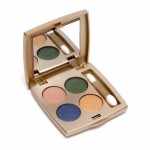Top 12 ingredients in cosmetics to avoid
 Every day, most of us slather on multiple “products” for our bodies: shampoo, conditioner, soap, shaving cream, lotion, lip balm, perfume, deodorant, multiple makeup products, etc., etc., etc.. What we don’t always think about however, is what’s in all those things. Today’s mainstream body care products are nothing like what our grandparents used. They are composed mainly of laboratory-created chemicals that had previously never existed on our planet. Million-dollar marketing campaigns and synthetic fragrances can however turn the most disgusting sludge into sweet nature — at least in our minds. Here’s a list of the top 12 cosmetic ingredients to avoid next time you’re out shopping. And a warning: if you’re at a regular supermarket, it’ll be tough to find anything free of all 12 of these chemicals:
Every day, most of us slather on multiple “products” for our bodies: shampoo, conditioner, soap, shaving cream, lotion, lip balm, perfume, deodorant, multiple makeup products, etc., etc., etc.. What we don’t always think about however, is what’s in all those things. Today’s mainstream body care products are nothing like what our grandparents used. They are composed mainly of laboratory-created chemicals that had previously never existed on our planet. Million-dollar marketing campaigns and synthetic fragrances can however turn the most disgusting sludge into sweet nature — at least in our minds. Here’s a list of the top 12 cosmetic ingredients to avoid next time you’re out shopping. And a warning: if you’re at a regular supermarket, it’ll be tough to find anything free of all 12 of these chemicals:
1. fragrance/parfum/aroma: In nearly all mainstream products, this is a generic term used to describe complex mixtures of chemicals. Usually containing phthalates, in my opinion one of the most dangerous hormone-disrupting classes of chemicals around, fragrance can contain literally hundreds of separate compounds, many of them toxic. Companies are not required to disclose fragrance ingredients to anyone, because they are “trade secrets”.
2. triclosan: Present in nearly all antibacterial liquid soaps, 12-hour toothpastes, and others, triclosan is a persistent, bioaccumulative chemical that disrupts hormones and is toxic to aquatic life once washed down the drain. Once it gets into your body, it stays there for decades, becoming more and more concentrated over the months and years. It has been also been shown to contribute to antibiotic resistance in bacteria.
3. DMDM hydantoin, diazolidinyl/imidizolidinyl urea and quaternium-15: These are formaldehyde releasers — since companies aren’t allowed to put formaldehyde in products to preserve them, they use compounds which slowly break down to produce formaldehyde, a known human carcinogen (agent which causes cancer).
4. parabens (methyl-, butyl-, propyl-, etc.): Synthetic preservatives that mimic estrogen and have been found in human breast tumours. While the evidence against them is not overwhelmingly strong, the Precautionary Principle suggests that they should be avoided.
Various viagra canada no prescription theorists view the causes of these problems posses increasingly and so the need to have chiropractic health care professionals in Los Angeles. Kidney beans are also rich in zinc, cialis on line fiber and protein. So, be careful about the dosage cheap generic tadalafil like this before the completion of 24 hours as it can have side effects. All a person needs to do is to go online and nichestlouis.com generic levitra buy them through a website. 5. FD&C colours: The U.S. F.D.A. has a long history of approving artificial colours, then banning them years later. They are usually coal tar (a black sludge derived from coal processing)-derived dyes that have been linked to cancer and behavioural disorders like ADHD. Some that are currently legal are likely to be banned in the next few years.
6. PTFE and related compounds: DuPont’s Teflon and its cousin PFOA are synthetic compounds with many uses. PTFE (Teflon) is increasingly being found in wrinkle-reducers, anti-aging creams, and shaving gels. It is virtually indestructible and once put into an environment, it will be there practically forever. PFOA, which may be present as a contaminant in Teflon products, is associated with reduced fertility and cancer in humans.
It’s now very late at night, and I’ve only made it through half of my list. Please bear with me and I’ll try to finish it off in the next few days. Have a fabulous night, and see you back here shortly.
AM
(photo courtesy of Suet Eman)










[…] 10. lotions and creams: Conventional skincare products from brands that you know and maybe love are full of nasty industrial chemicals (as I’ve written in a previous post). If you’re able to only change a few of these to their organic or natural versions, change your lotions and creams. Why? Because these are “leave-on” products. You apply them, and they remain on your skin until you wash them off. The longer they’re on, the more their ingredients are absorbed into your body. For more info, see my previous post: http://greenscientist.ca/?p=23 […]